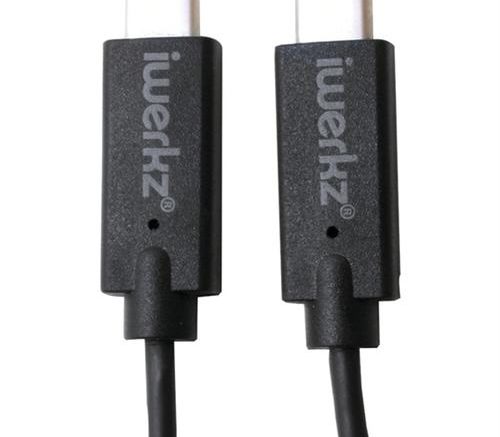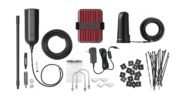It seems like it’s been a long time coming. I first wrote about the USB-C cable back in 2014 if you can believe it. It was designed to be a replacement for both the USB Type A connector found in PCs and the MicroUSB connector found in phones. USB Type A had been around since the late 1990s, when it replaced a much larger parallel cable used for printers. The impact of USB was pretty seismic, too. It took about four years for literally everything from keyboards to hard drives to abandon all the different proprietary standards they used and all center on USB. That’s because USB was a pretty good standard. It was easy to connect, didn’t snag other cables as you fished it through, and was relatively fast for the day.
Improvements on USB continued throughout the 2000s making it faster and giving the cable the ability to carry more voltage. However, the biggest jump for USB technology came in the early 2010s as almost every phone started abandoning their older connectors and standardizing on USB. This was driven by governments in Europe and Asia that mandated a single connector. MicroUSB was chosen because it was small enough to work with almost any size phone and could carry both power and data unlike older designs.
The problem was, MicroUSB was awful.
As I said in a 2014 editorial, MicroUSB was truly the worst of all worlds. The connector was delicate and easy to break. It was practically impossible to put in right-side-up, and it didn’t carry enough voltage for fast charging. The MicroUSB standard was everywhere, but it wasn’t good anywhere.
It didn’t take long for the people who certify USB cables to come up with a better choice. From then on, we just had to wait for manufacturers to use it.
It seems like the time has finally come
I know that not that long ago I wrote that USB-C is a surprising mess. I’m not backing off that position, but in that article I wrote about how the inconsistent quality of USB-C cables was causing problems. Hopefully, more adoption of USB-C will mean that better quality cables become more common. In the meantime, shop for them at Solid Signal, ours are great.
Pretty much every high-end phone maker now uses USB-C in their phones. USB-C is a reversible connector that’s almost the same size as MicroUSB. It can carry enough power so that you can charge a laptop with it if you want to. Even the connector assembly is designed to be easier to waterproof because people don’t want to worry about their phones getting wet.
Will the iPhone ever go to USB-C?
As usual the problem has been Apple. Apple moved to their own connector, which they called “Lightning,” around the time that MicroUSB was starting to give way to USB-C. Lightning is a great connector. It’s even more durable than USB-C and slightly smaller. It supports higher voltages like USB-C. But, like everything else Apple-related, it takes strict licensing to use it and so you were never going to see it outside the Apple ecosystem.
The first ray of hope came when Apple finally refreshed its MacBook Pro line of laptops, for the first time in what seemed like forever. Instead of a tangle of proprietary connectors, the new MacBook Pro featured USB-C, and only USB-C. It was used to power the laptop, used for connection to monitors, and used for peripherals.
Of course this threw the Apple world into an uproar as the faithful rushed to buy adapters so all of their older stuff would still work. This is the problem in general with Apple stuff. You can’t really be sure that their connectors are going to stay around and become a standard, but you still have to buy all the adapters anyway.
Second time is the charm
Apple is known for two things. They are known for proprietary connectors that no one uses. They’re also known for ditching those connectors almost as fast as they are adopted. In the last twenty years Apple has gone through a string of connectors. Apple Desktop Bus, Apple Cinema Display, Firewire 400, Firewire 800, and Thunderbolt have all come and gone. The smart Apple user knows that if their egos can stand it, they need to wait 2 years or one “product generation” after any new standard comes out. Only then can they feel comfortable jumping in or they might be left with an incompatible device.
Luckily, it looks like that time has come. With the release of the second-generation MacBook Pro to have USB-C, it’s beginning to look like Apple’s serious. There are also rumors that Lightning might be yet another casualty of Apple’s fickleness. Rumors of USB-C ports on the next generation of iPhones just won’t go away. Imagine that. You could finally see one cable solution that worked with virtually every cell phone on the planet. One cable that worked with Apples and Samsungs. How cool would that be?
We’ll all have to watch carefully. Finally tough, I am pleased to say that the future is looking bright for USB-C. It’s the one connector that has the potential to end the craziness once and for all. You can finally feel comfortable shopping for USB-C peripherals and cables at Solid Signal.





